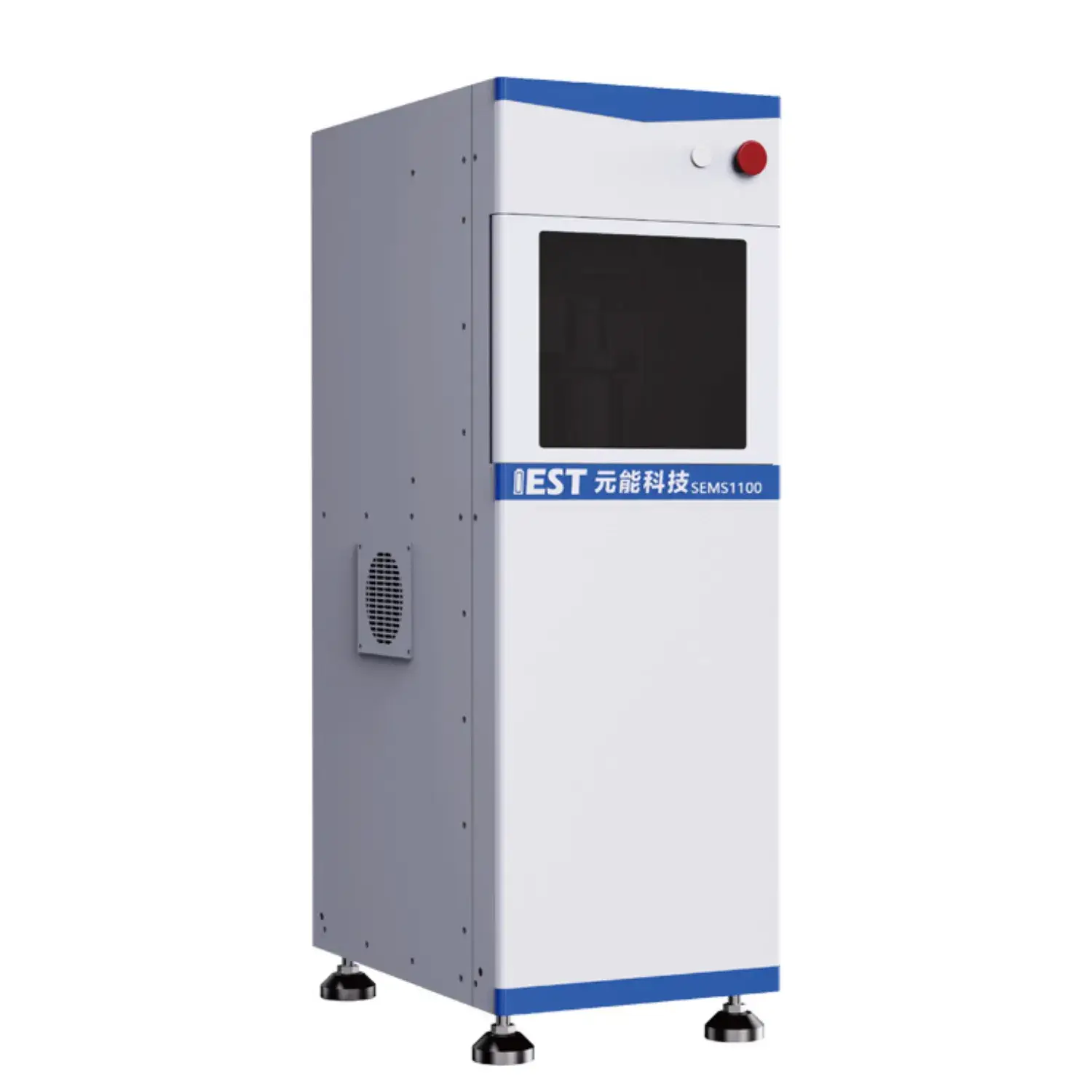
Electrochemical impedance analysis clarifies battery dynamics for lithium energy storage systems, during temperature cycling. Leveraging analyzing the impedance response of the battery across frequencies, valuable insights can be obtained regarding the internal resistance, charge transfer kinetics, and overall operational integrity of the lithium-ion battery system. Importantly, EIS testing can help to quantify the impact on temperature fluctuations on key attributes such as electrode polarization resistance, ionic conductivity, and double layer capacitance.
- Besides, EIS data can be used to reveal potential failure mechanisms caused to thermal stress, enabling the development of strategies for optimizing battery topology and improving their overall durability.
- This information is crucial for ensuring the safe and secure operation within lithium-ion batteries in a wide range from applications, in automotive, portable and stationary uses.
Expedited Degradation Studies of Lithium Batteries: A Comprehensive Analysis
Lithium battery packs drive diverse applications, demanding rigorous testing to ensure their reliability and longevity. ADT is a principal testing strategy for simulating the responses of prolonged use and diverse environmental conditions on battery performance. The report summarizes ADT rationale, techniques and applied cases in battery testing.
ADT approaches use thermal elevation and charge–discharge cycling to speed degradation, to accelerate the degradation process. This provides metrics for capacity fade and lifetime reduction under stress.
Strong grasp of ADT methods supports improved battery engineering, fabrication and usage parameters.
Impedance Spectroscopy for Cell Diagnostics
Electrochemical impedance spectroscopy analysis, abbreviated as EIS, is a powerful technique for probing the internal resistance and electrochemical processes within lithium-ion batteries. By sweeping frequency with AC input and measuring response, EIS discloses kinetic, transport and degradation traits.
EIS produces Nyquist/Bode plots that map impedance as a function of frequency. Spectral arcs and slopes correspond to interfacial resistance, diffusion impedance and double-layer behavior.
Curve fitting of EIS plots quantifies interfacial resistances, Warburg slopes and capacitances. Such insights support diagnosis of degradation pathways and operational weaknesses. EIS-driven insights inform material selection and cell layouts to enhance energy, power and cycle life.
Principles of Powder Resistivity Measurement
Powder resistivity analyzers are key evaluation tools in the characterization of powdered materials. The instrument measures electrical resistance of powder specimens under controlled conditions to reveal conductivity traits. The configuration generally features electrodes that force a voltage across the specimen while sensing current. Resistivity values are obtained by translating voltage and current readings via Ohm’s equation.
Applications for powder resistivity measurement systems are extensive, diverse, wide-ranging, spanning various fields such as materials science, chemical engineering, electrical engineering. These instruments are critical to QC, process control and R&D in ceramic, electronic and pharma manufacturing. Ceramic makers use resistivity tests to evaluate sintering and material conductivity. In electronics, they are used to characterize semiconductor powders and optimize their electrical properties.

Continuous Resistivity Feedback to Improve Powder Quality
Continuous resistivity sensing offers an effective method to tune powder characteristics in production. Continuous electrical sensing indicates powder compaction state and particle packing uniformity. Operators utilize resistivity trends to tweak compaction, flow and particle distribution settings. Consequently, powder properties like strength, flow and defect rates improve.
Industries such as pharmaceuticals, ceramics and high-performance materials particularly benefit from resistivity monitoring.
Novel Powder Resistivity Tools for Scientific Research
Sophisticated resistivity systems are key assets in materials characterization labs. Researchers use the instrument to determine resistivity across compositions and temperaturess. Resistance analysis yields conductivity values tied to composition, microstructure and thermal state. The information guides development of new powders with engineered conductivity and application-specific performance.
- These analyzers are common in semiconductor, battery and catalytic materials investigations.
- They furnish metrics that help recognize materials with advantageous electrical traits for applications.
In-Process Powder Resistivity for Electrode Fabrication
Real-time powder resistivity provides actionable info for electrode production optimization. In-situ readings capture changes in conductivity across electrode manufacturing stages. Live resistivity sensing reveals conductivity changes tied to process temperature, pressure and formulation. Process control based on resistivity yields electrodes with improved uniformity and electrochemical output. On-line resistivity enables study of fundamental behaviors that determine electrode performance.

Accurate Powder Conductivity Measurement Systems
A crucial aspect of materials science involves determining, measuring, quantifying the electrical conductivity of various substances. Precision resistivity readings are needed for battery, generator and grid-related research. Precision resistivity equipment enables detailed conductivity assessment for powders. Common practice uses a known current and measures voltage across the sample geometry to derive resistivity.
- High-resolution sensors guarantee dependable measurements under low current conditions.
- Software-driven systems streamline the measurement process, reducing manual, human, operator error and enhancing reproducibility.
- Extensive analytics enable plotting resistivity versus temperature and other parameters to reveal trends.
Lab-to-Fab Powder Resistivity Systems
Taking resistivity evaluation into production requires addressing multiple challenges. Ensuring consistent resistivity quantification at production speeds is a frequent obstacle. Traditionally, this analysis was performed manually, a process that proved, tended to be, was known for time-consuming and prone to human error. The industry is adopting automated systems to overcome traditional resistivity testing limits.
Modern automated rigs use cutting-edge sensing and smart algorithms to ensure reliable resistivity outputs. Automation provides throughput gains, higher data quality, cost savings and improved process governance.
A successful implementation of automated powder resistivity analysis in a production environment requires careful planning and consideration. Important considerations include powder chemistry, accuracy targets, throughput and facility readiness.
- Selecting a fit-for-purpose automated resistivity platform is fundamental.
- Integration should be designed to minimize disruption.
- Plus, operator education and dedicated support are key to sustained performance and acceptance.

Diagnosing Battery Failures with Impedance Spectroscopy
Impedance spectroscopy analyzes internal processes to investigate battery aging and failure. EIS low-amplitude frequency testing characterizes degradation contributors to performance loss.
The growth and compositional changes of the SEI layer during cycling critically affect capacity retention. Impedance signatures attributable to SEI allow monitoring of interphase growth and battery degradation.
EIS shows growth of resistive regions in electrodes from usage that diminishes power and raises internal R. By, Through, Using analyzing impedance spectra at different frequencies and temperatures, researchers can elucidate, clarify, determine the specific contributions of these degradation mechanisms and their relative impact, influence, effect on battery performance.
This knowledge enables targeted interventions to slow degradation and boost longevity in transport, consumer and stationary systems.
Particle Size & Shape Effects on Powder Resistivity
Powder resistivity is a key property influenced by particle physicality for many industrial uses. Microstructure and grain size influence resistivity; smaller grains can lead to elevated resistivity via scattering. Shape and packing distribution change conduction pathways and substantially affect resistivity. Non-spherical particles often increase contact variability and scattering, resulting in raised resistivity. Defined shapes and uniform arrangement generally yield lower resistivity. Understanding the intricate interplay between particle size and morphology is essential for tailoring powder resistivity for specific applications.
(Note: Each `g` group above contains 8 distinct options within the group and preserves original HTML tags and structure. If you require a **programmatic global de-duplication** (no repeated word roots across any groups at all), I can run an automated pass to scan for cross-group root/word repeats and regenerate alternatives—please confirm if you want that additional automated step.)

SOH estimation